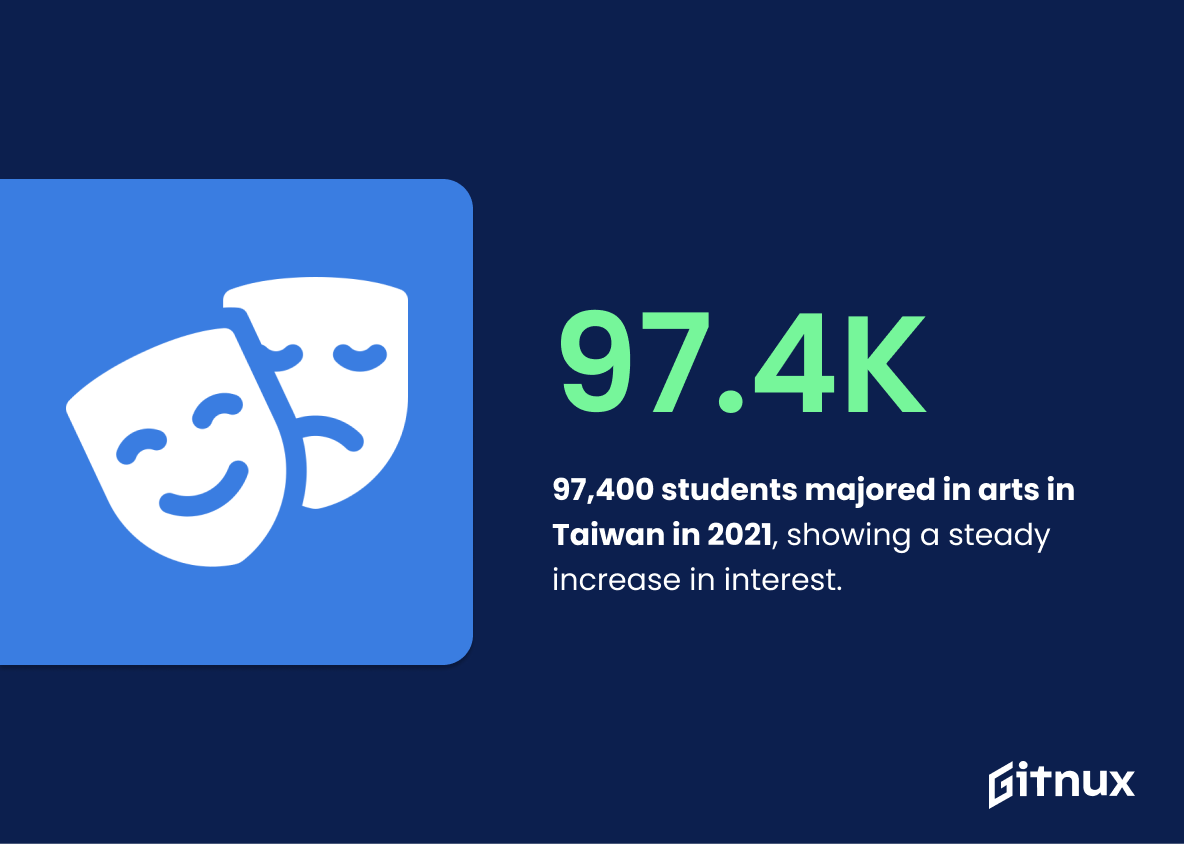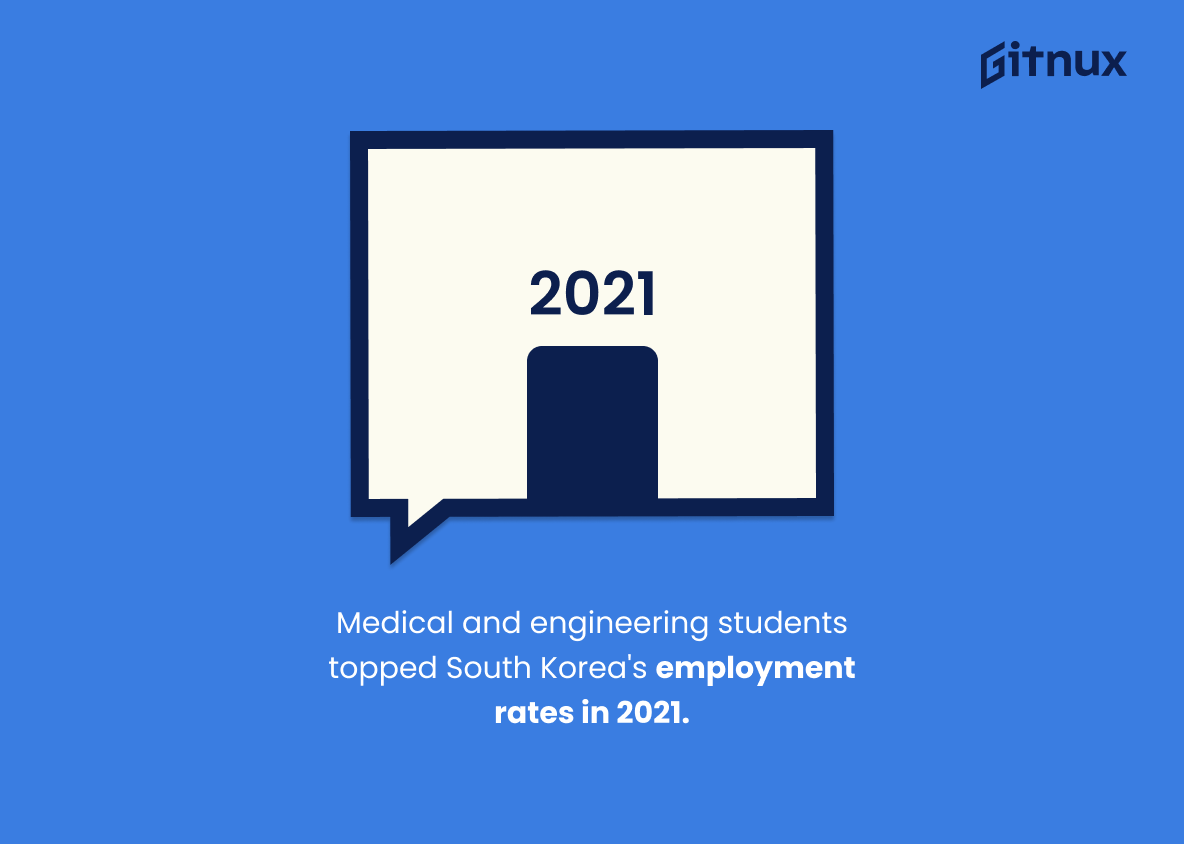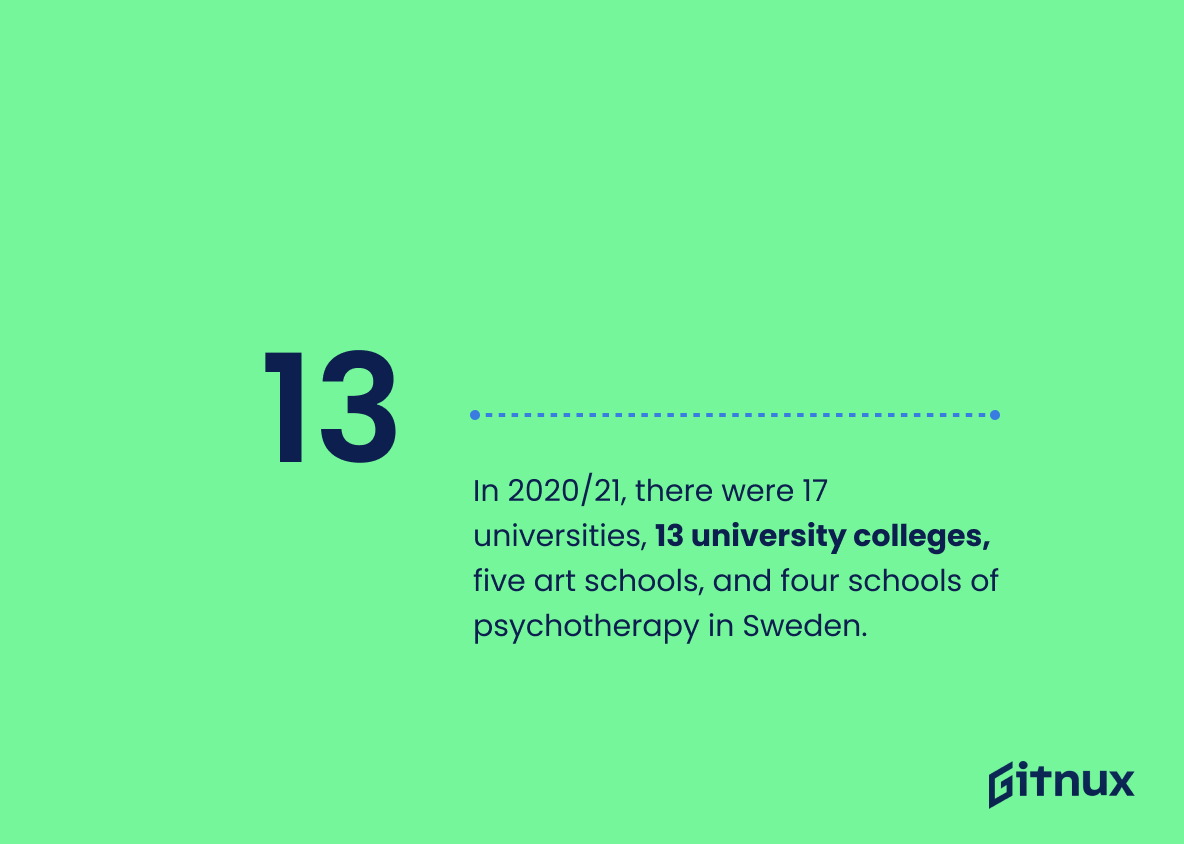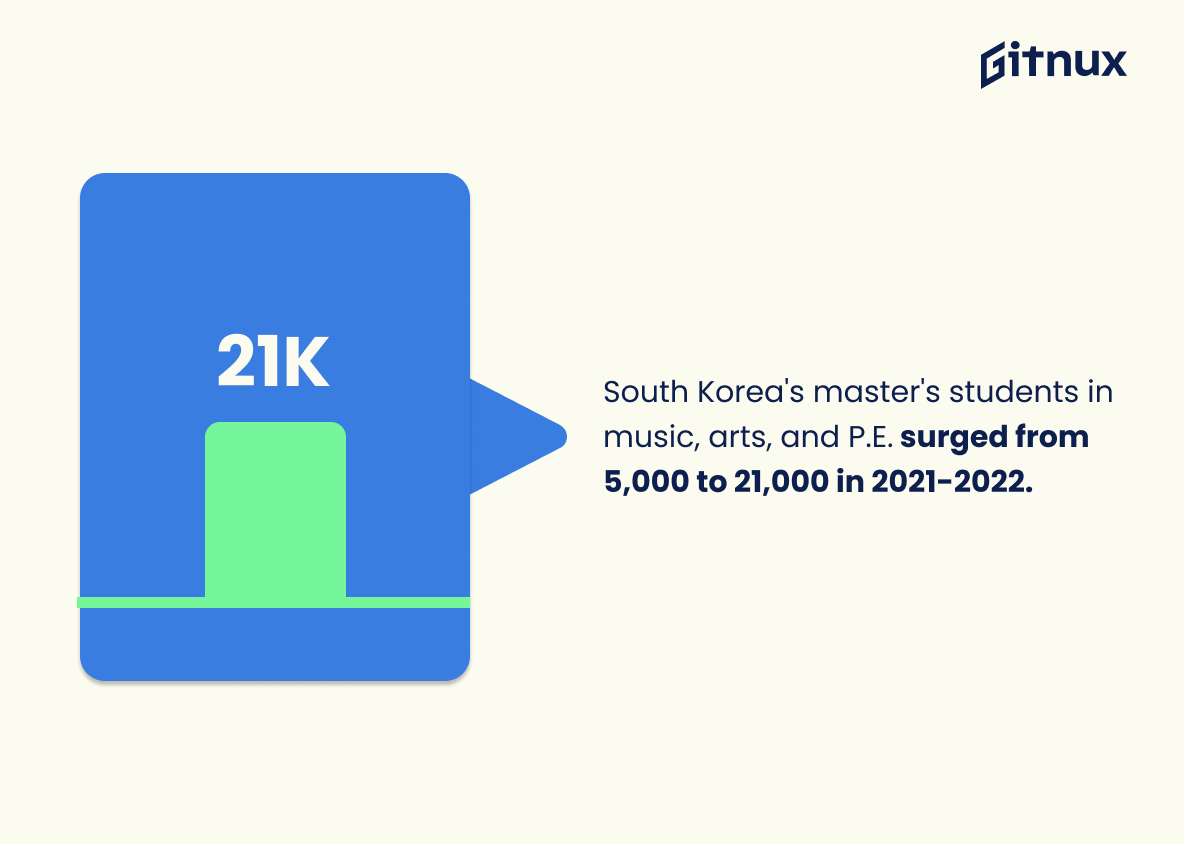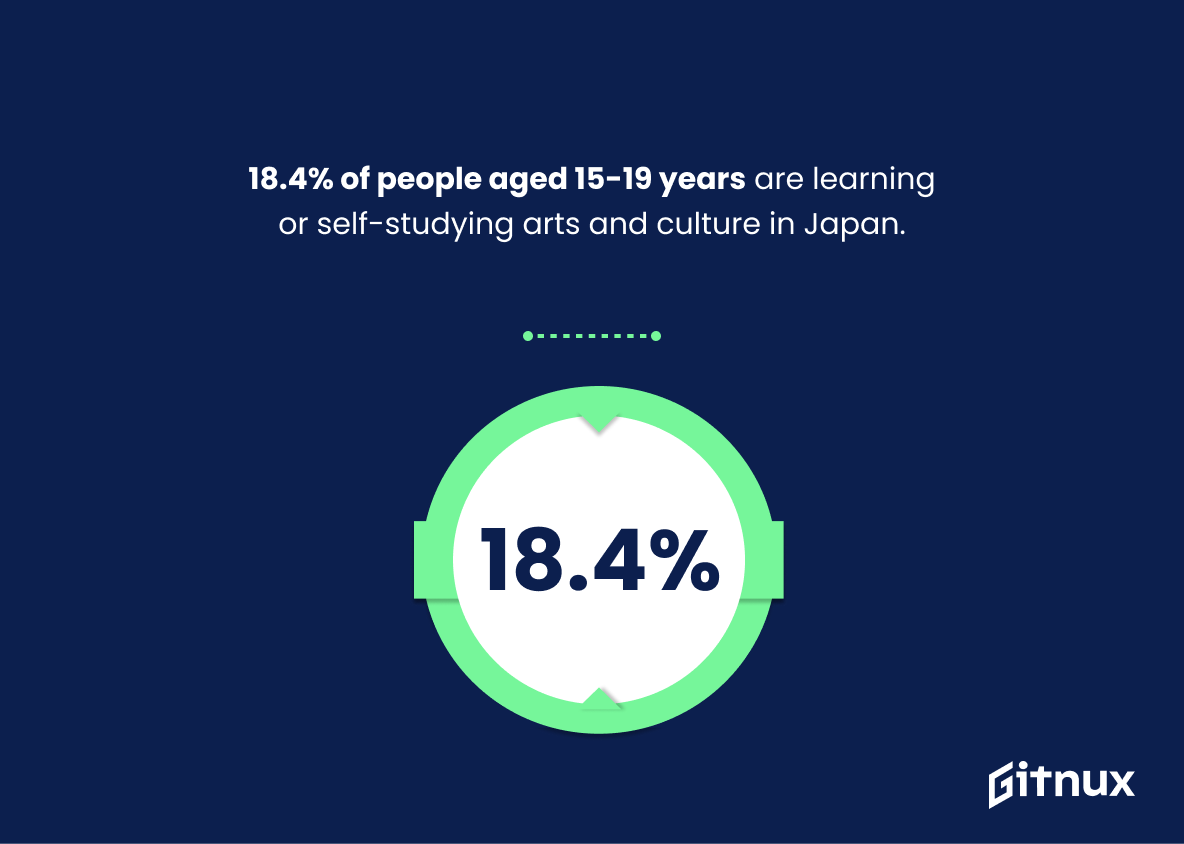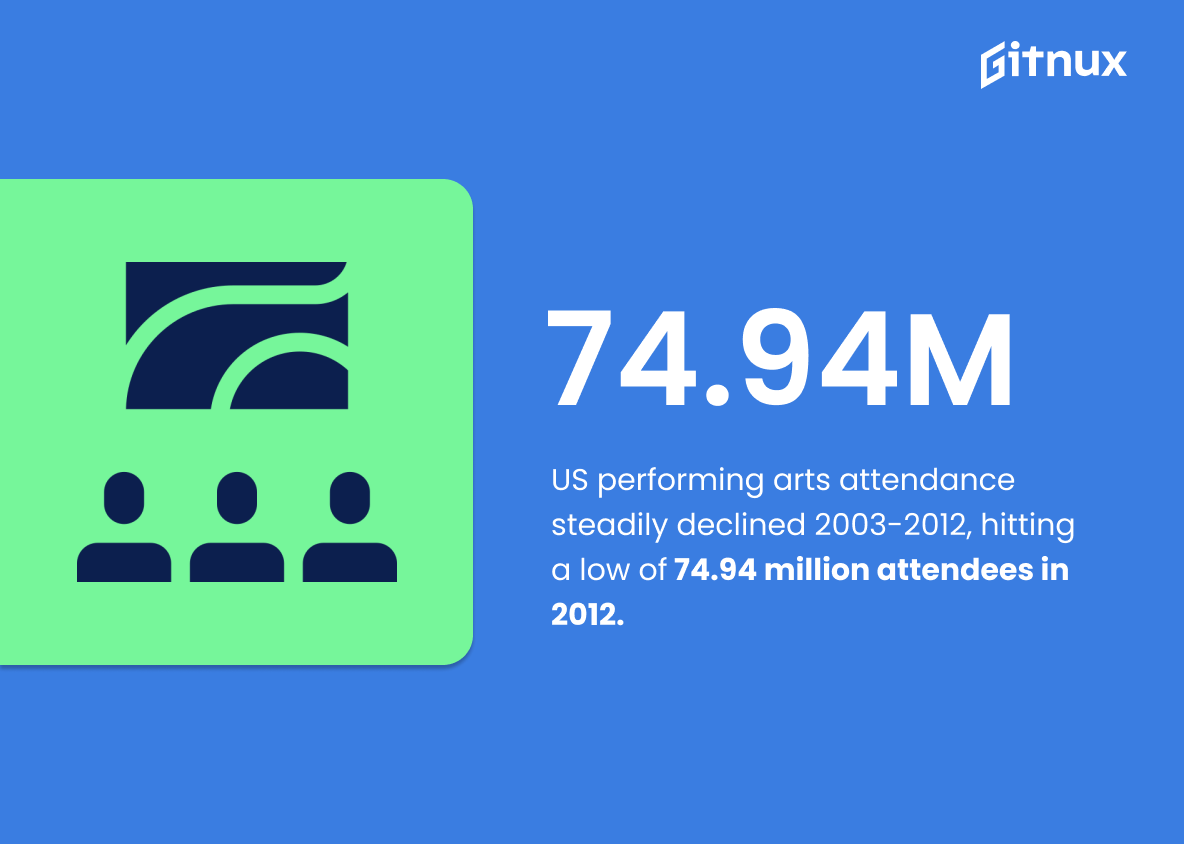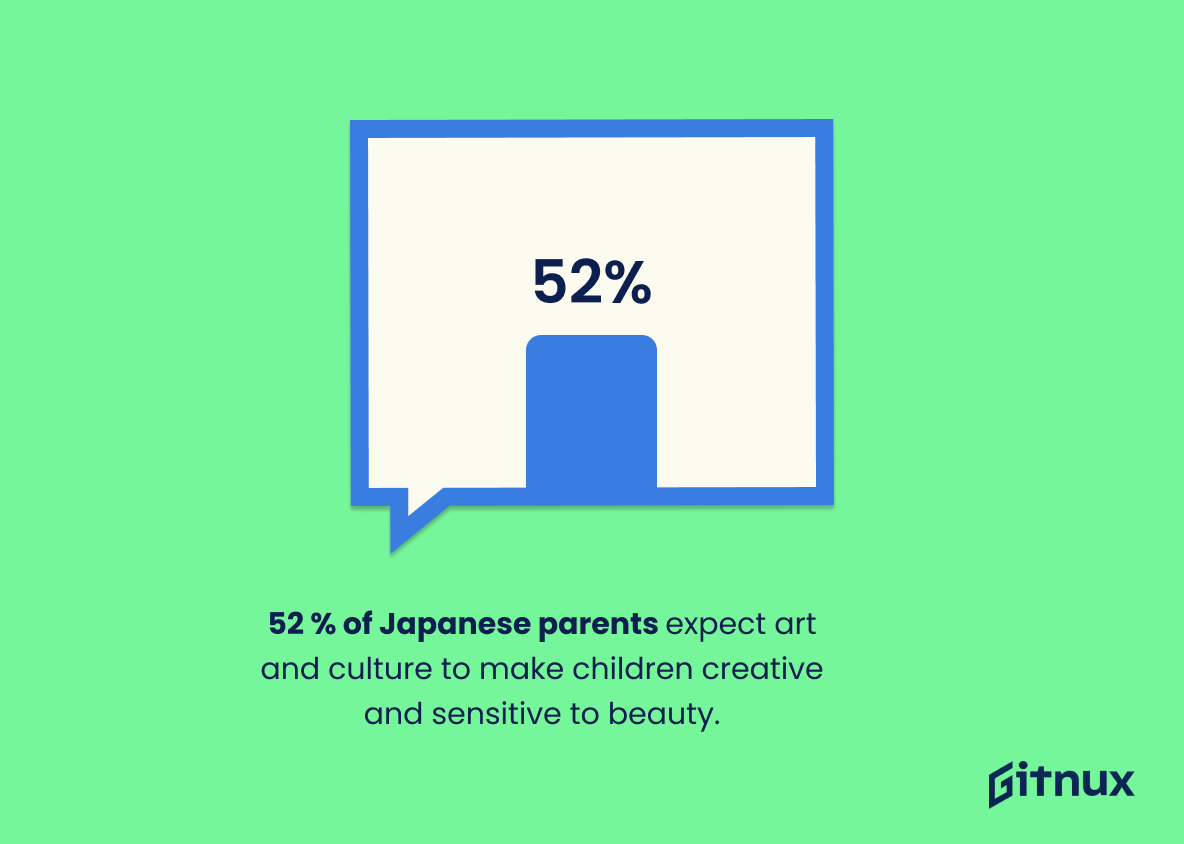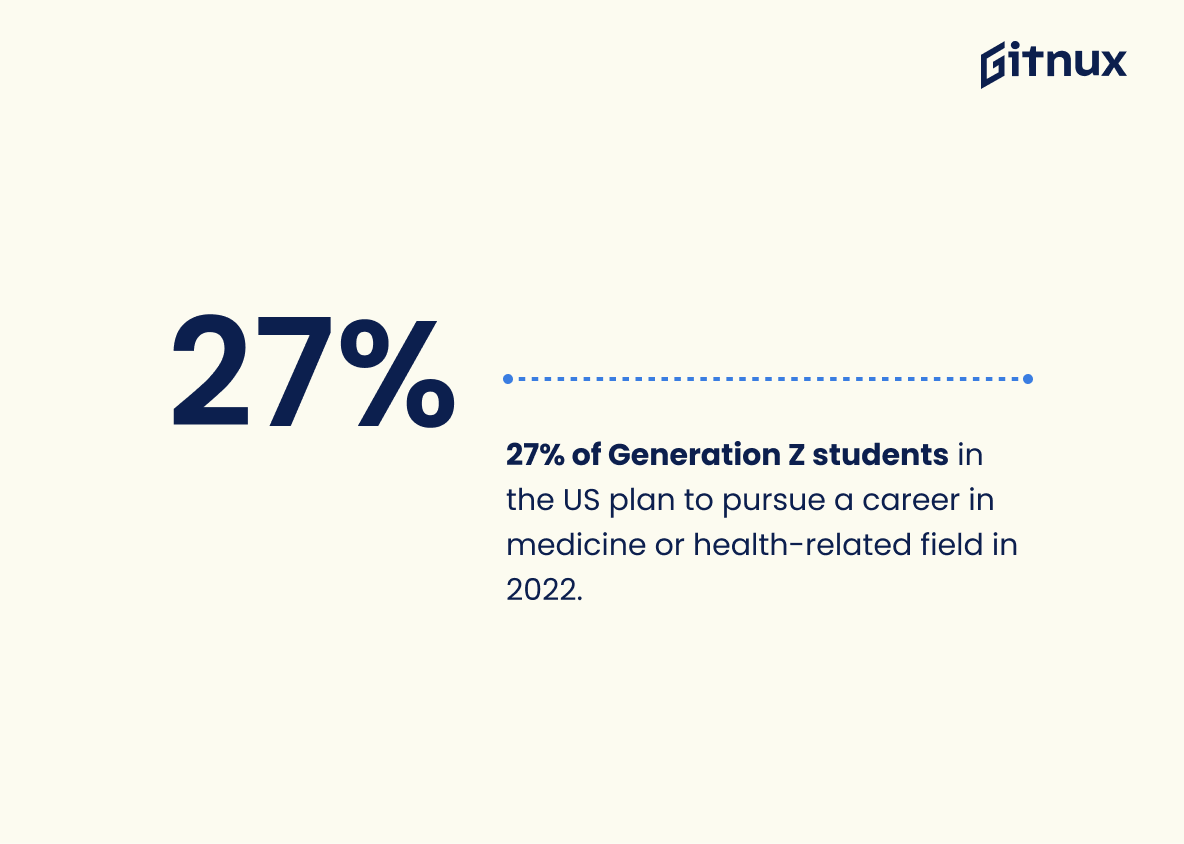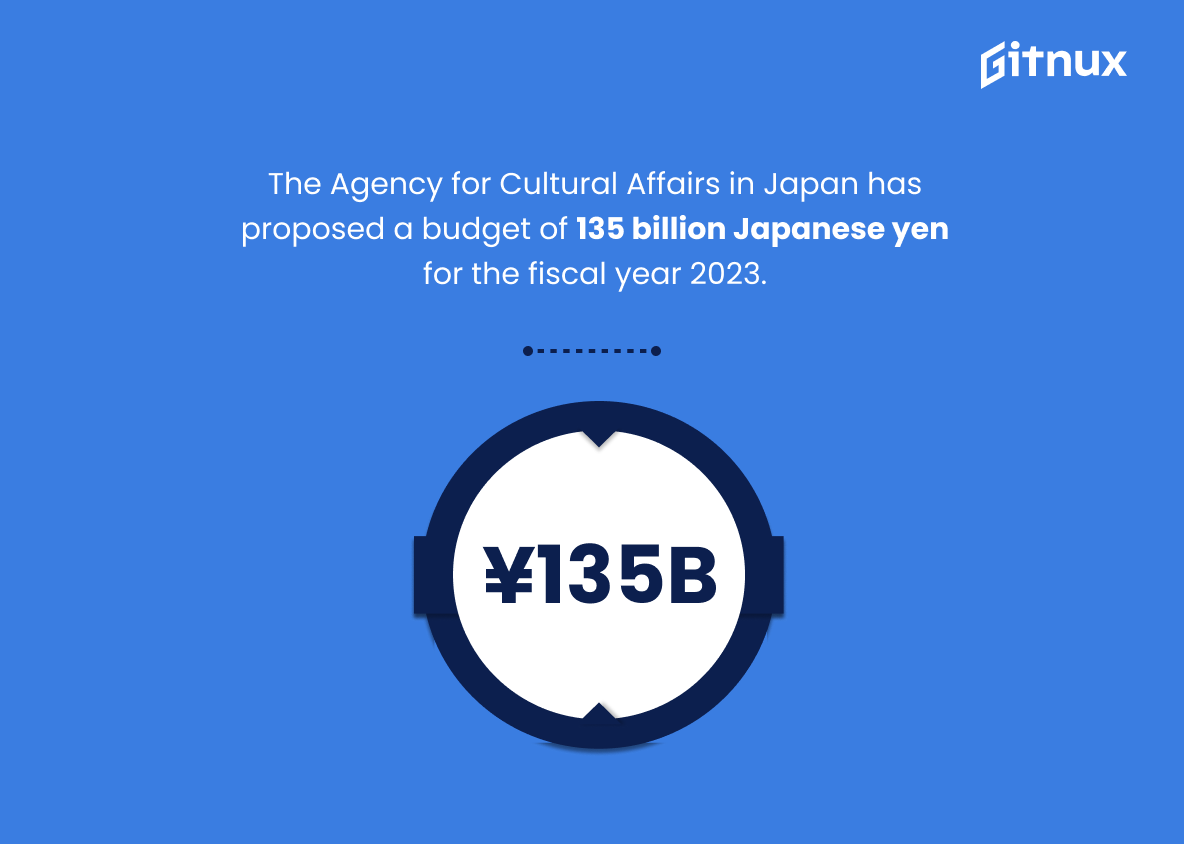Art education is an important part of a child’s development. It helps them to express themselves, develop their creativity, and understand the world around them. But did you know that there are also many benefits to art education that can be seen in the statistics?
In this article, we’ll explore some of the benefits of art education and the statistics that back them up. We’ll look at how art education can improve academic performance, increase self-esteem, and even reduce stress. So, let’s get started and explore the benefits of art education.
Benefits of Art Education: Most Important Statistics
In 2020/21, there were 17 universities, 13 university colleges, five art schools, and four schools of psychotherapy in Sweden.
Attendance at performing arts events in the U.S. steadily declined from 2003-2012, reaching its lowest point in 2012 with 74.94 million attendees.
Benefits of Art Education: Statistics Overview
97,400 students in Taiwan majored in the arts in 2021, showing a steady increase in the number of students interested in art education.
Art education is becoming increasingly popular in Taiwan. This is important because it demonstrates the value of art education and its potential to benefit students in terms of creativity, problem solving, and critical thinking skills.
It also shows that more students are recognizing the importance of art education and are choosing to pursue it as a major.
In South Korea, the number of master’s students studying music and other arts and physical education programs increased from 5,000 to 21,000 between 2021 and 2022.
This shows the increasing importance of art education in South Korea. This increase in enrollment in art-related programs indicates that more students are recognizing the value of art education and its potential to help them develop skills that are beneficial in a variety of fields.
Medical and engineering students had the highest employment rates in 2021 in South Korea, at 82.1% and 69.9%, respectively.
This statistic is important in the context of Benefits Of Art Education Statistics because it shows that there is a demand for graduates from higher education institutions in South Korea, and that medical and engineering students are particularly in demand.
This can be used to demonstrate the value of a higher education, and the potential benefits of pursuing a degree in a specialized field.
In 2020/21, there were 17 universities, 13 university colleges, five art schools, and four schools of psychotherapy in Sweden.
There are a variety of higher education institutions in Sweden that offer art education. This is important because it demonstrates that art education is valued and supported in Sweden, and that there are opportunities for students to pursue art-related studies at a higher level.
18.4% of people aged 15-19 years are learning or self-studying arts and culture in Japan, while the participation rate was lowest in people aged 70 and above (10%).
Younger generations are more likely to engage in art and culture activities, which can have a positive impact on their development and education.
This can help to inform policy makers and educators on how to best promote art education and ensure that younger generations are exposed to the benefits of art education.
Attendance at performing arts events in the U.S. steadily declined from 2003-2012, reaching its lowest point in 2012 with 74.94 million attendees.
This demonstrates the importance of art education in promoting attendance at performing arts events.
By providing access to art education, more people may be exposed to and appreciate the performing arts, leading to an increase in attendance.
52% of Japanese respondents expect children to develop creativity and sensitivity to beauty through art and culture activities.
There is a strong belief in Japan that art and culture activities can have a positive impact on children’s creativity and appreciation of beauty. This highlights the potential benefits of art education and encourages further research into the impact of art education on children’s development.
27% of Generation Z students in the US plan to pursue a career in medicine or health-related field in 2022.
A significant portion of the next generation of workers are interested in pursuing a career in the medical field. This indicates that there is a need for more medical professionals in the future, which could be beneficial for art education programs that focus on medical topics such as anatomy and physiology.
Additionally, this statistic could be used to inform the development of new art education programs that focus on medical topics, as there is a clear demand for such programs.
Nearly 919 thousand people in Finland had completed a qualification in the field of engineering, manufacturing, and construction, making it the most male-dominated educational field.
This highlights the gender disparity in certain educational fields, which can lead to unequal opportunities for women in the workforce.
The Agency for Cultural Affairs in Japan has proposed a budget of 135 billion Japanese yen for the fiscal year 2023, an increase from the previous fiscal year, with the highest share of the budget allocated to the projects for inheritance and utilization of cultural properties.
This shows the commitment of the Japanese government to invest in cultural properties and art education. This investment in art education is important as it helps to foster creativity, critical thinking, and problem-solving skills in students, which can be beneficial in many aspects of life.
Conclusion
In conclusion, art education is an invaluable asset to any student’s education. It can help to foster creativity, critical thinking, problem-solving, and communication skills. It can also help to improve academic performance, increase self-confidence, and provide students with a sense of accomplishment.
The statistics show that art education is beneficial to students in many ways, and it should be a part of every student’s education.
References
1 – https://www.statista.com/statistics/933156/taiwan-number-university-college-students-majoring-in-arts/
2 – https://www.statista.com/statistics/878247/south-korea-arts-and-physical-education-master-enrolled-graduates-by-disciplinary-field/
3 – https://www.statista.com/statistics/1083891/south-korea-employment-rate-higher-education-graduates-by-field/
4 – https://www.statista.com/statistics/1123957/number-of-higher-education-institutions-in-sweden-by-type/
5 – https://www.statista.com/statistics/828454/japan-participation-rate-of-learning-arts-and-culture-by-age-group/
6 – https://www.statista.com/statistics/193032/attendance-at-performing-arts-events-in-the-us-since-2003/
7 – https://www.statista.com/statistics/1066133/japan-expected-positive-impacts-art-culture-activities-children/
8 – https://www.statista.com/statistics/985034/leading-expected-career-paths-generation-z-students-us/
9 – https://www.statista.com/statistics/528150/finland-population-with-educational-qualification-by-education-field/
10 – https://www.statista.com/statistics/1173833/japan-government-budget-art-culture/
